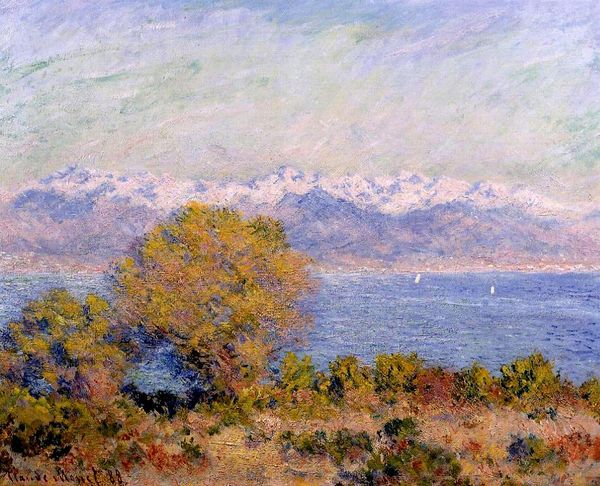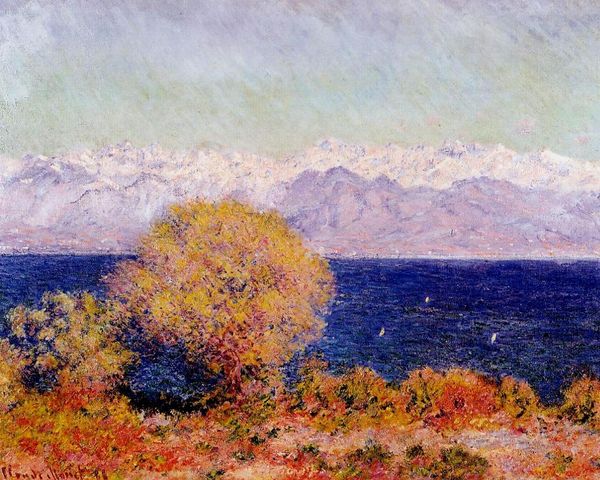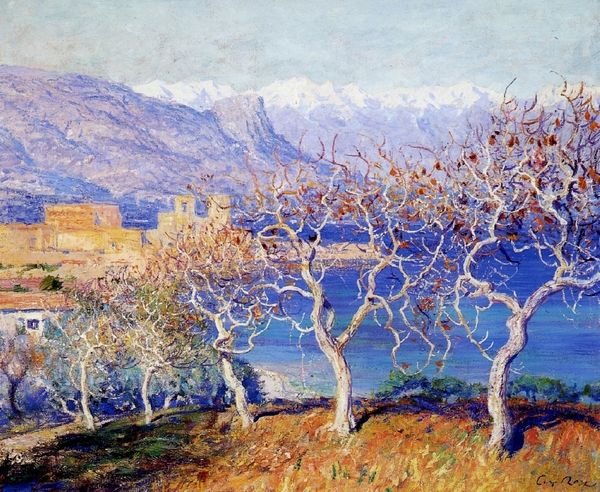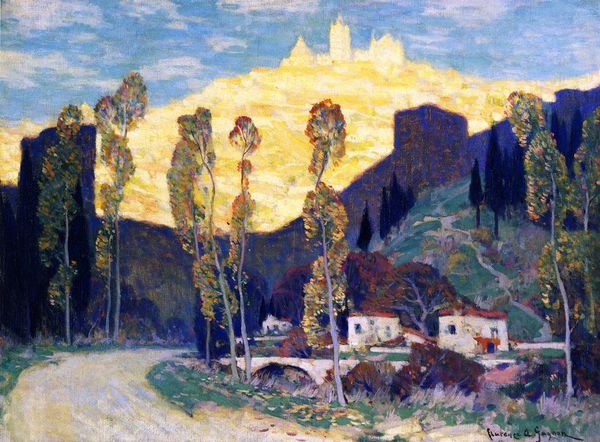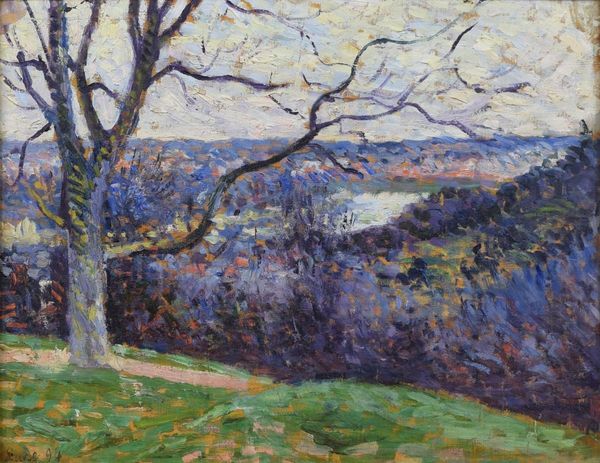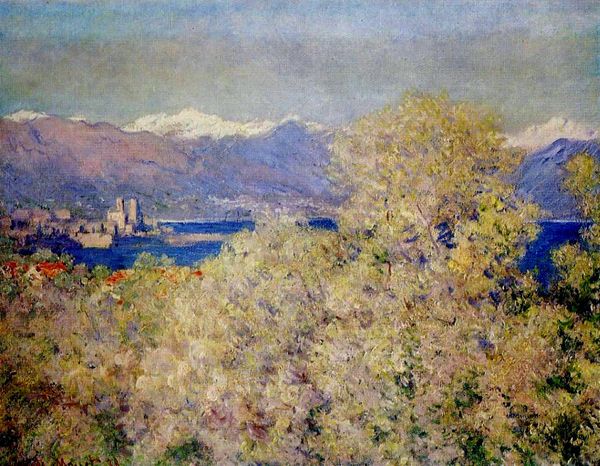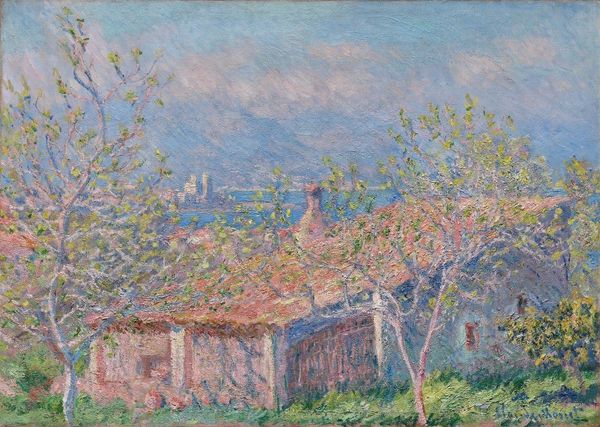
painting, plein-air, oil-paint
#
tree
#
sky
#
painting
#
impressionism
#
plein-air
#
oil-paint
#
landscape
#
impressionist landscape
#
figuration
#
nature
#
oil painting
#
mountain
#
seascape
#
natural-landscape
#
coastline landscape
#
cityscape
Copyright: Public domain
"Antibes Seen from the Cape, Mistral Wind" was painted by Claude Monet with oil on canvas, capturing the essence of the Mediterranean landscape. Look closely, and you’ll notice how Monet used short, broken brushstrokes to convey the effect of light and movement, which was very typical for the Impressionists. The visible brushwork makes the surface come alive, almost shimmering. Monet wasn't just depicting a scene; he was also showing the act of painting itself. The materials—pigments ground with oil and applied with brushes—allowed Monet to capture the fleeting effects of light and atmosphere, what he was most interested in. His painting shows a departure from traditional art academies, as he was committed to painting outdoors, "en plein air," which was only possible thanks to new innovations in industrialized paint production, where paint tubes could be carried with ease. This approach democratized painting, making it more accessible and immediate. The painting challenges traditional notions of what art should be, emphasizing the importance of direct observation and the artist's personal experience.
Comments
No comments
Be the first to comment and join the conversation on the ultimate creative platform.
